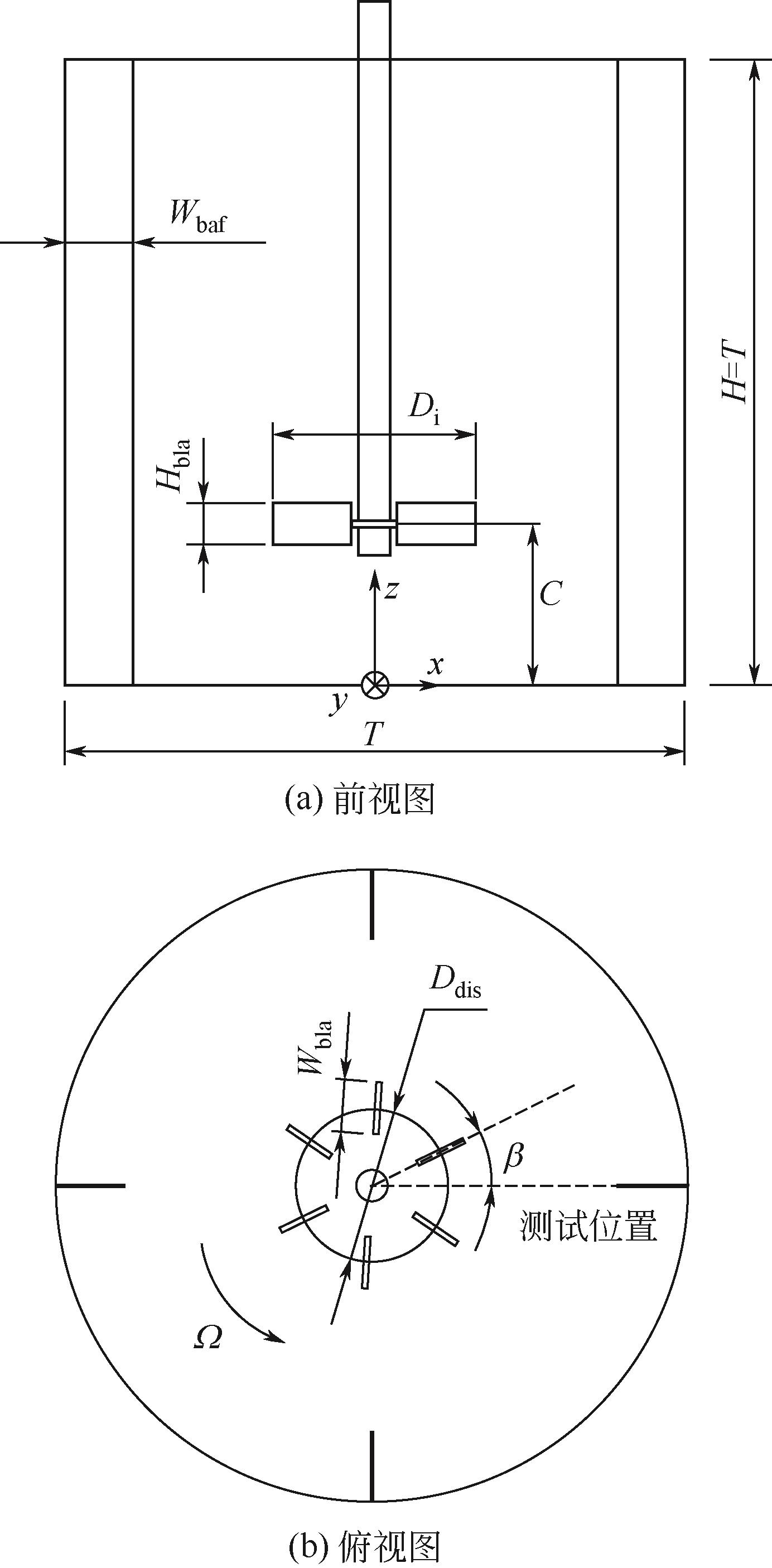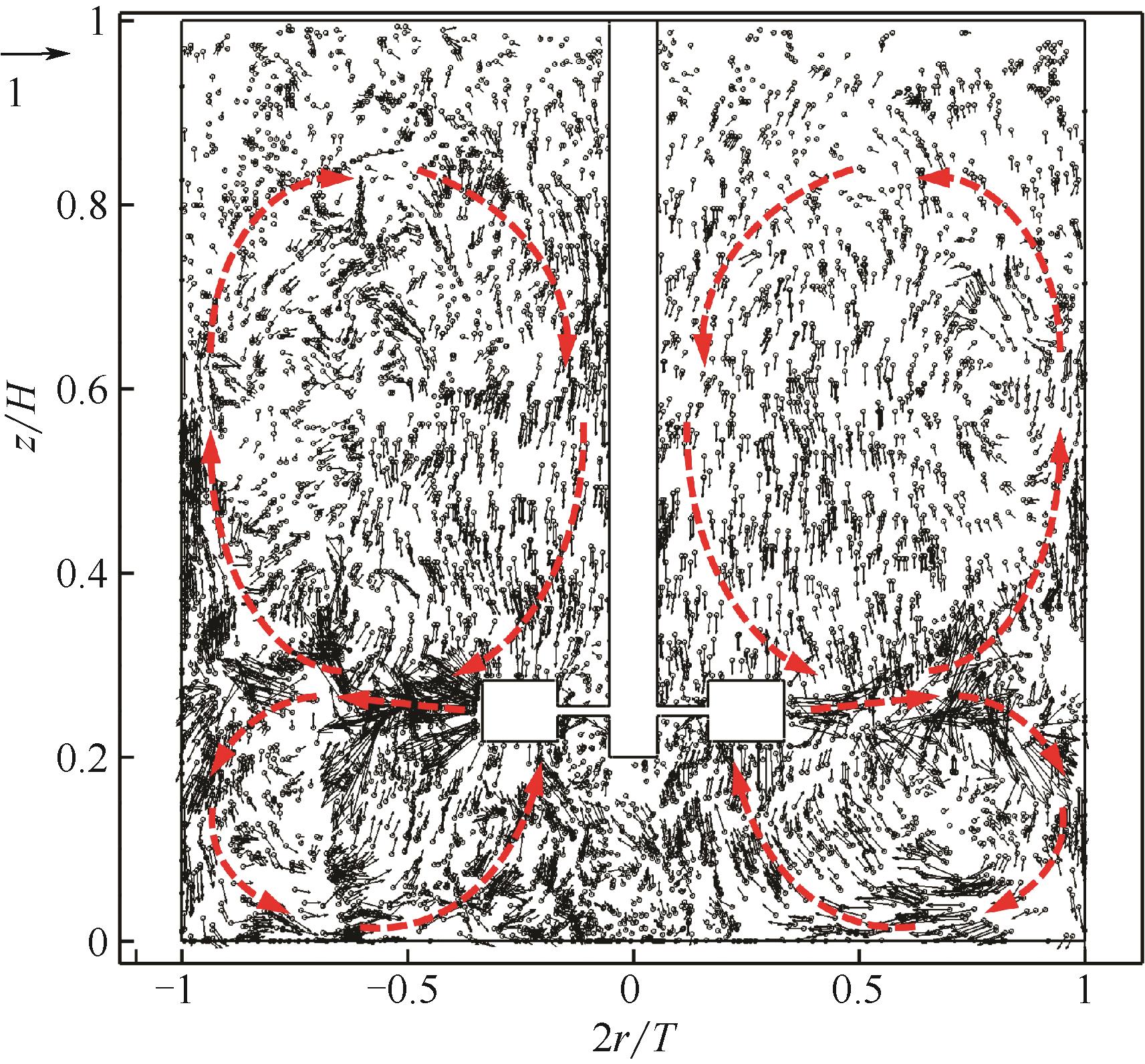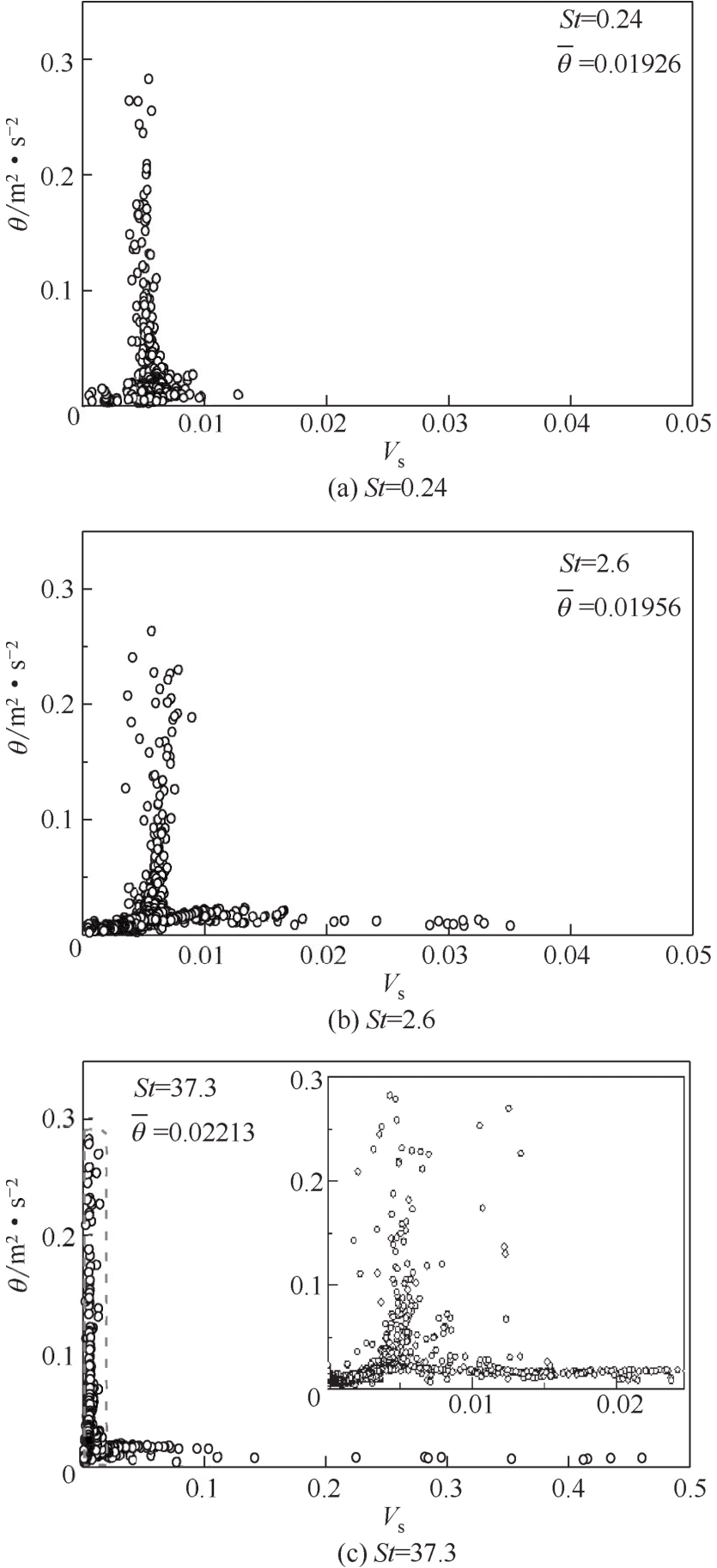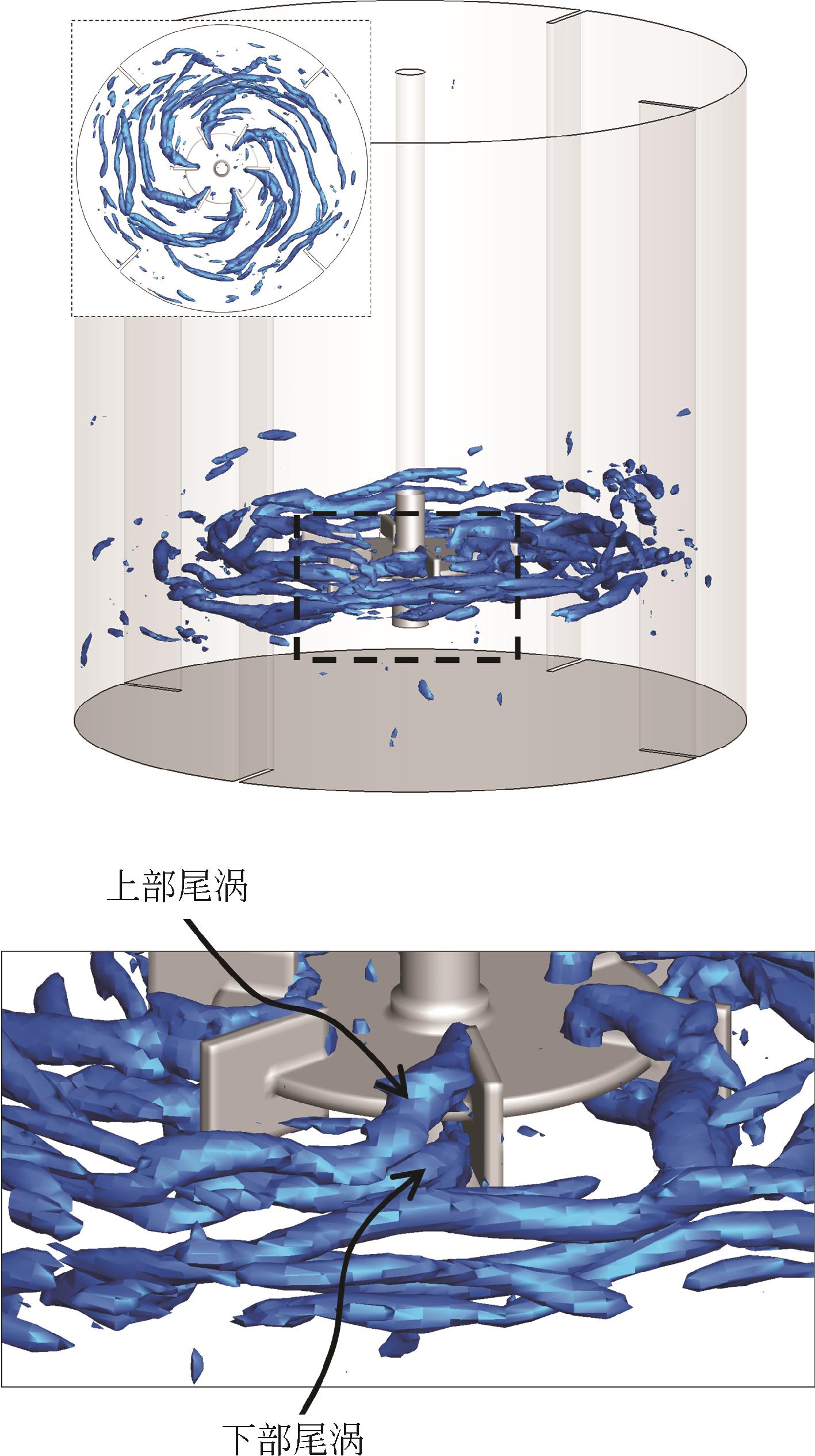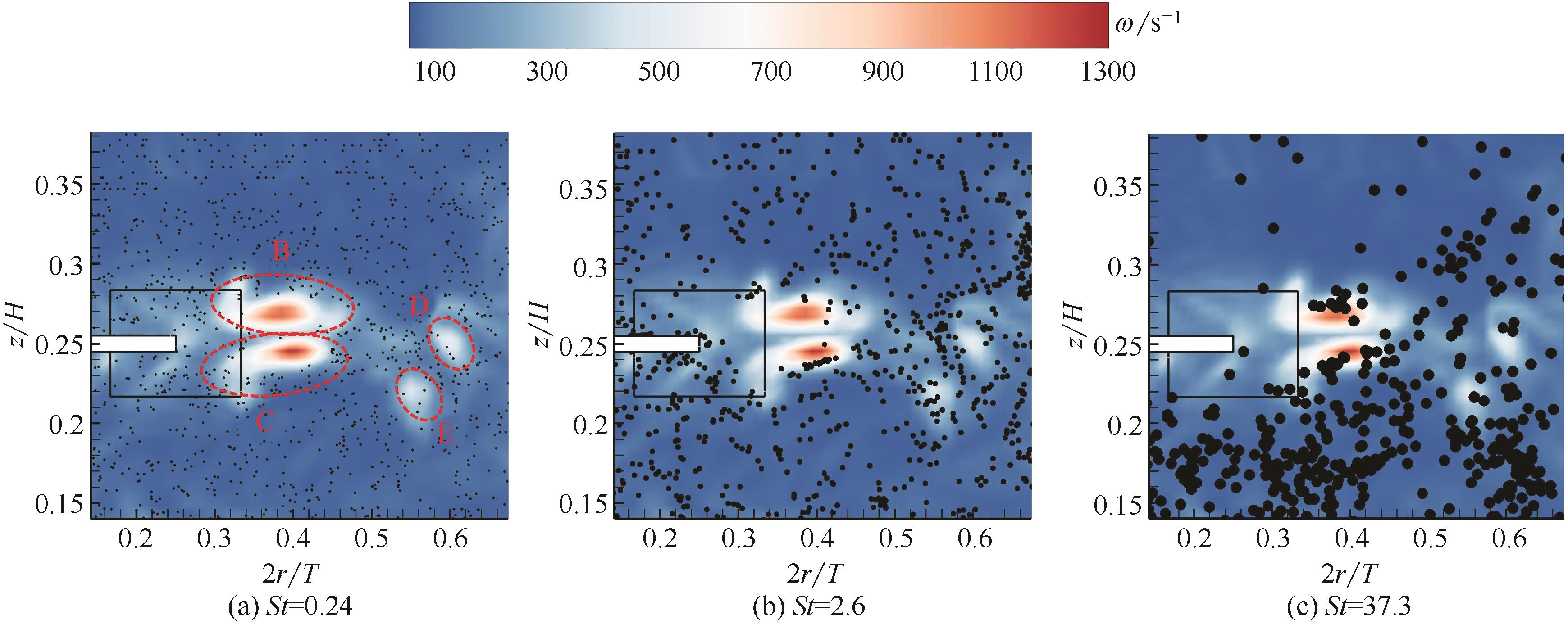Chemical Industry and Engineering Progress ›› 2021, Vol. 40 ›› Issue (12): 6479-6489.DOI: 10.16085/j.issn.1000-6613.2021-1369
• Column: multiphase flow test • Previous Articles Next Articles
Numerical simulation of flow field characteristics and particle motion behavior in Rushton turbine stirred tank
WANG Zhijie( ), ZHAO Yanlin, YAO Jun(
), ZHAO Yanlin, YAO Jun( )
)
- International Joint Laboratory on Clean Energy Science and Technology, Beijing Key Laboratory of Process Fluid Filtration and Separation, College of Mechanical and Transportation Engineering, China University of Petroleum-Beijing, Beijing 102249, China
-
Received:2021-06-30Revised:2021-08-10Online:2021-12-21Published:2021-12-05 -
Contact:YAO Jun
Rushton涡轮搅拌槽内流场特性及颗粒运动行为数值模拟
- 中国石油大学(北京)机械与储运工程学院,清洁能源科学与技术国际联合实验室,过程流体过滤与分离技术 北京市重点实验室,北京 102249
-
通讯作者:姚军 -
作者简介:王志杰(1993—),男,博士研究生,研究方向为多相流数值计算、多相流磨损腐蚀测量。E-mail:wangzhijie721@126.com 。 -
基金资助:国家自然科学基金(51876221)
CLC Number:
Cite this article
WANG Zhijie, ZHAO Yanlin, YAO Jun. Numerical simulation of flow field characteristics and particle motion behavior in Rushton turbine stirred tank[J]. Chemical Industry and Engineering Progress, 2021, 40(12): 6479-6489.
王志杰, 赵彦琳, 姚军. Rushton涡轮搅拌槽内流场特性及颗粒运动行为数值模拟[J]. 化工进展, 2021, 40(12): 6479-6489.
share this article
Add to citation manager EndNote|Ris|BibTeX
URL: https://hgjz.cip.com.cn/EN/10.16085/j.issn.1000-6613.2021-1369
案 例 | 颗粒直径dp /mm | 颗粒密度ρs /kg·m-3 | 颗粒体积分数Vs/% | 斯托克斯数St | 颗粒包 数量/个 |
|---|---|---|---|---|---|
| 1 | 0.2 | 1180 | 0.5 | 0.24 | 1×106 |
| 2 | 0.665 | 1180 | 0.5 | 2.6 | 1×106 |
| 3 | 2.5 | 1180 | 0.5 | 37.3 | 1×106 |
案 例 | 颗粒直径dp /mm | 颗粒密度ρs /kg·m-3 | 颗粒体积分数Vs/% | 斯托克斯数St | 颗粒包 数量/个 |
|---|---|---|---|---|---|
| 1 | 0.2 | 1180 | 0.5 | 0.24 | 1×106 |
| 2 | 0.665 | 1180 | 0.5 | 2.6 | 1×106 |
| 3 | 2.5 | 1180 | 0.5 | 37.3 | 1×106 |
| 1 | 黎义斌, 梁开一, 歹晓晖, 等. 搅拌反应器气液两相流混合过程的涡旋效应数值模拟[J]. 化工进展, 2021, 40(1): 99-110. |
| LI Yibin, LIANG Kaiyi, DAI Xiaohui, et al. Numerical simulation of eddy effect in the mixing process of gas-liquid two-phase flow in stirred reactor[J]. Chemical Industry and Engineering Progress, 2021, 40(1): 99-110. | |
| 2 | 李文金, 周勇军, 袁名岳, 等. 几种框式桨搅拌槽内流动特性的比较研究[J]. 化工学报, 2021, 72(4): 1998-2005. |
| LI Wenjin, ZHOU Yongjun, YUAN Mingyue, et al. Comparative study of flow characteristics in a stirred tank with different types of frame impellers[J]. CIESC Journal, 2021, 72(4): 1998-2005. | |
| 3 | WANG S Y, JIANG X X, WANG R C, et al. Numerical simulation of flow behavior of particles in a liquid-solid stirred vessel with baffles[J]. Advanced Powder Technology, 2017, 28: 1611-1624. |
| 4 | 张桂夫, 王鲁海, 朱雨建, 等. 基于PIV测量的涡轮流量计响应分析[J]. 仪器仪表学报, 2013, 34(10): 2381-2387. |
| ZHANG Guifu, WANG Luhai, ZHU Yujian, et al. Turbine flowmeter response analysis based on PIV measurement[J]. Chinese Journal of Scientific Instrument, 2013, 34(10): 2381-2387. | |
| 5 | 周勇军, 袁名岳, 孙存旭. 改进型框式组合桨搅拌釜内流场特性[J]. 化工进展, 2019, 38(12): 5306-5313. |
| ZHOU Yongjun, YUAN Mingyue, SUN Cunxu. Investigating on flow field in stirred tank equipped with improved frame type combined impellers[J]. Chemical Industry and Engineering Progress, 2019, 38(12): 5306-5313. | |
| 6 | ZHAO Y L, TANG C Y, YAO J, et al. Investigation of erosion behavior of 304 stainless steel under solid-iquid jet flow impinging at 30°[J]. Petroleum Science, 2020, 17(4): 1135-1150. |
| 7 | HOSEINI S S, NAJAFI G, GHOBADIAN B, et al. Impeller shape-optimization of stirred-tank reactor: CFD and fluid structure interaction analyses[J]. Chemical Engineering Journal, 2021, 413: 127497. |
| 8 | DERKSEN J J. Numerical simulation of solids suspension in a stirred tank[J]. AIChE Journal, 2003, 49(11): 2700-2714. |
| 9 | MALIK S, LÉVÊQUE E, BOUAIFI M, et al. Shear improved Smagorinsky model for large eddy simulation of flow in a stirred tank with a Rushton disk turbine[J]. Chemical Engineering Research and Design, 2016, 108: 69-80. |
| 10 | HARTMANN H, DERKSEN J J, MONTAVON C, et al. Assessment of large eddy and RANS stirred tank simulations by means of LDA[J]. Chemical Engineering Science, 2004, 59(12): 2419-2432. |
| 11 | RAMÍREZ-CRUZ J, SALINAS-VÁZQUEZ M, ASCANIO G, et al. Mixing dynamics in an uncovered unbaffled stirred tank using large-Eddy simulations and a passive scalar transport equation[J]. Chemical Engineering Science, 2020, 222: 115658. |
| 12 | TAMBURINI A, CIPOLLINA A, MICALE G, et al. CFD simulations of dense solid-liquid suspensions in baffled stirred tanks: prediction of solid particle distribution[J]. Chemical Engineering Journal, 2013, 223: 875-890. |
| 13 | NOURI J M, WHITELAW J H. Particle velocity characteristics of dilute to moderately dense suspension flows in stirred reactors[J]. International Journal of Multiphase Flow, 1992, 18(1): 21-33. |
| 14 | LI G H, GAO Z M, LI Z P, et al. Particle‐resolved PIV experiments of solid‐liquid mixing in a turbulent stirred tank[J]. AIChE Journal, 2018, 64(1): 389-402. |
| 15 | GIMBUN J, RIELLY C D, NAGY Z K, et al. Detached eddy simulation on the turbulent flow in a stirred tank[J]. AIChE Journal, 2012, 58(10): 3224-3241. |
| 16 | SHI Pengyu, RZEHAK R. Solid-liquid flow in stirred tanks: Euler-Euler/RANS modeling[J]. Chemical Engineering Science, 2020, 227: 115875. |
| 17 | GONG H, HUANG F L, LI Z P, et al. Mechanisms for drawdown of floating particles in a laminar stirred tank flow[J]. Chemical Engineering Journal, 2018, 346: 340-350. |
| 18 | ZHAO Y L, WANG Y Z, YAO J, et al. Reynolds number dependence of particle resuspension in turbulent duct flows[J]. Chemical Engineering Science, 2018, 187: 33-51. |
| 19 | LI G H, LI Z P, GAO Z M, et al. Particle image velocimetry experiments and direct numerical simulations of solids suspension in transitional stirred tank flow[J]. Chemical Engineering Science, 2018, 191: 288-299. |
| 20 | SHI Pengyu, RZEHAK R. Bubbly flow in stirred tanks: Euler-Euler/RANS modeling[J]. Chemical Engineering Science, 2018, 190: 419-435. |
| 21 | CORONEO M, MONTANTE G, PAGLIANTI A, et al. CFD prediction of fluid flow and mixing in stirred tanks: numerical issues about the RANS simulations[J]. Computers & Chemical Engineering, 2011, 35(10): 1959-1968. |
| 22 | LU Z Y, LIAO Y, QIAN D Y, et al. Large eddy simulations of a stirred tank using the lattice Boltzmann method on a nonuniform grid[J]. Journal of Computational Physics, 2002, 181(2): 675-704. |
| 23 | ZHANG Y H, YANG C, MAO Z S. Large eddy simulation of the gas-liquid flow in a stirred tank[J]. AIChE Journal, 2008, 54(8): 1963-1974. |
| 24 | MONTANTE G, BRUCATO A, LEE K C, et al. An experimental study of double-to-single-loop transition in stirred vessels[J]. The Canadian Journal of Chemical Engineering, 1999, 77(4): 649-659. |
| 25 | YIANNESKIS M, POPIOLEK Z, WHITELAW J H. An experimental study of the steady and unsteady flow characteristics of stirred reactors[J]. Journal of Fluid Mechanics, 1987, 175: 537-555. |
| 26 | 胡陈枢. 流化床内流动、混合与反应的多尺度模拟研究[D]. 杭州: 浙江大学, 2019. |
| HU Chenshu. Multi-scale modeling of hydrodynamics, mixing and reactions in fluidized beds[D]. Hangzhou: Zhejiang University, 2019. | |
| 27 | SUN L Y, XU W G, LU H L, et al. Simulated configurational temperature of particles and a model of constitutive relations of rapid-intermediate-dense granular flow based on generalized granular temperature[J]. International Journal of Multiphase Flow, 2015, 77: 1-18. |
| 28 | EATON J K, FESSLER J R. Preferential concentration of particles by turbulence[J]. International Journal of Multiphase Flow, 1994, 20: 169-209. |
| 29 | YAO J, ZHAO Y L, HU G L, et al. Numerical simulation of particle dispersion in the wake of a circular cylinder[J]. Aerosol Science and Technology, 2009, 43(2): 174-187. |
| 30 | YAO J, ZHAO Y L, LI N, et al. Mechanism of particle transport in a fully developed wake flow[J]. Industrial & Engineering Chemistry Research, 2012, 51(33): 10936-10948. |
| 31 | LI D, FAN J R, LUO K, et al. Direct numerical simulation of a particle-laden low Reynolds number turbulent round jet[J]. International Journal of Multiphase Flow, 2011, 37(6): 539-554. |
| [1] | WANG Yunfei, QIN Rui, ZHENG Lijun, LI Yan, LI Qingping. Research progress of rotating packed bed simulation through CFD method [J]. Chemical Industry and Engineering Progress, 2023, 42(S1): 1-9. |
| [2] | WANG Tai, SU Shuo, LI Shengrui, MA Xiaolong, LIU Chuntao. Dynamic behavior of single bubble attached to the solid wall in the AC electric field [J]. Chemical Industry and Engineering Progress, 2023, 42(S1): 133-141. |
| [3] | SUN Jipeng, HAN Jing, TANG Yangchao, YAN Bowen, ZHANG Jieyao, XIAO Ping, WU Feng. Numerical simulation and optimization of operating parameters of sulfur wet molding process [J]. Chemical Industry and Engineering Progress, 2023, 42(S1): 189-196. |
| [4] | CHEN Kuangyin, LI Ruilan, TONG Yang, SHEN Jianhua. Structure design of gas diffusion layer in proton exchange membrane fuel cell [J]. Chemical Industry and Engineering Progress, 2023, 42(S1): 246-259. |
| [5] | YANG Yudi, LI Wentao, QIAN Yongkang, HUI Junhong. Analysis of influencing factors of natural gas turbulent diffusion flame length in industrial combustion chamber [J]. Chemical Industry and Engineering Progress, 2023, 42(S1): 267-275. |
| [6] | GUO Qiang, ZHAO Wenkai, XIAO Yonghou. Numerical simulation of enhancing fluid perturbation to improve separation of dimethyl sulfide/nitrogen via pressure swing adsorption [J]. Chemical Industry and Engineering Progress, 2023, 42(S1): 64-72. |
| [7] | SHAO Boshi, TAN Hongbo. Simulation on the enhancement of cryogenic removal of volatile organic compounds by sawtooth plate [J]. Chemical Industry and Engineering Progress, 2023, 42(S1): 84-93. |
| [8] | CHEN Lin, XU Peiyuan, ZHANG Xiaohui, CHEN Jie, XU Zhenjun, CHEN Jiaxiang, MI Xiaoguang, FENG Yongchang, MEI Deqing. Investigation on the LNG mixed refrigerant flow and heat transfer characteristics in coil-wounded heat exchanger (CWHE) system [J]. Chemical Industry and Engineering Progress, 2023, 42(9): 4496-4503. |
| [9] | LIU Xuanlin, WANG Yikai, DAI Suzhou, YIN Yonggao. Analysis and optimization of decomposition reactor based on ammonium carbamate in heat pump [J]. Chemical Industry and Engineering Progress, 2023, 42(9): 4522-4530. |
| [10] | LUO Cheng, FAN Xiaoyong, ZHU Yonghong, TIAN Feng, CUI Louwei, DU Chongpeng, WANG Feili, LI Dong, ZHENG Hua’an. CFD simulation of liquid distribution in different distributors in medium-low temperature coal tar hydrogenation reactor [J]. Chemical Industry and Engineering Progress, 2023, 42(9): 4538-4549. |
| [11] | ZHAO Xi, MA Haoran, LI Ping, HUANG Ailing. Simulation analysis and optimization design of mixing performance of staggered impact micromixer [J]. Chemical Industry and Engineering Progress, 2023, 42(9): 4559-4572. |
| [12] | BU Zhicheng, JIAO Bo, LIN Haihua, SUN Hongyuan. Review on computational fluid dynamics (CFD) simulation and advances in pulsating heat pipes [J]. Chemical Industry and Engineering Progress, 2023, 42(8): 4167-4181. |
| [13] | YE Zhendong, LIU Han, LYU Jing, ZHANG Yaning, LIU Hongzhi. Optimization of thermochemical energy storage reactor based on calcium and magnesium binary salt hydrates [J]. Chemical Industry and Engineering Progress, 2023, 42(8): 4307-4314. |
| [14] | YU Junnan, YU Jianfeng, CHENG Yang, QI Yibo, HUA Chunjian, JIANG Yi. Performance prediction of variable-width microfluidic concentration gradient chips by deep learning [J]. Chemical Industry and Engineering Progress, 2023, 42(7): 3383-3393. |
| [15] | SHAN Xueying, ZHANG Meng, ZHANG Jiafu, LI Lingyu, SONG Yan, LI Jinchun. Numerical simulation of combustion of flame retardant epoxy resin [J]. Chemical Industry and Engineering Progress, 2023, 42(7): 3413-3419. |
| Viewed | ||||||
|
Full text |
|
|||||
|
Abstract |
|
|||||
